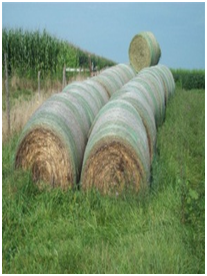Mark Thomas is an ISDA Soil Conservation Resource Specialist
located in Southeastern Indiana. He was
raised and still works on his family farm raising corn, soybeans, beef cattle,
and hay. They have used No-till Planting
for over twenty years. Mark graduated
from Purdue University in 1986 with a BS in Agriculture. He has two children and is an adult 4H club
leader. He has been employed in Soil
Conservation for 23 years and serves farmers in Franklin, Dearborn, Ohio,
Switzerland, and Ripley Counties.
A pilot program between the Electric Power Research Institute
and the State Agriculture Departments in Indiana, Ohio, and Kentucky launched
in the summer of 2012. The Ohio River
Basin Trading Project is an interstate trading program that will allow power
companies and farmers to work together to reduce nitrogen, phosphorus, and
sediment runoff in the Ohio River Basin.
The five counties in Indiana that have been selected for this pilot
program are Wayne, Dearborn, Ohio, Switzerland, and Ripley.
Farmers enter into contracts with their Soil and Water
Conservation Districts to create water quality credits by installing Best
Management Practices including Heavy Use Protection Areas, Hay Planting, and
Cover Crops. Several of these practices
have been installed this summer.
Another farmer has installed a Heavy Use Area Protection pad
to help collect the nutrients from a
beef cattle feeding area.
For more information, contact the Indiana State Department of Agriculture.









